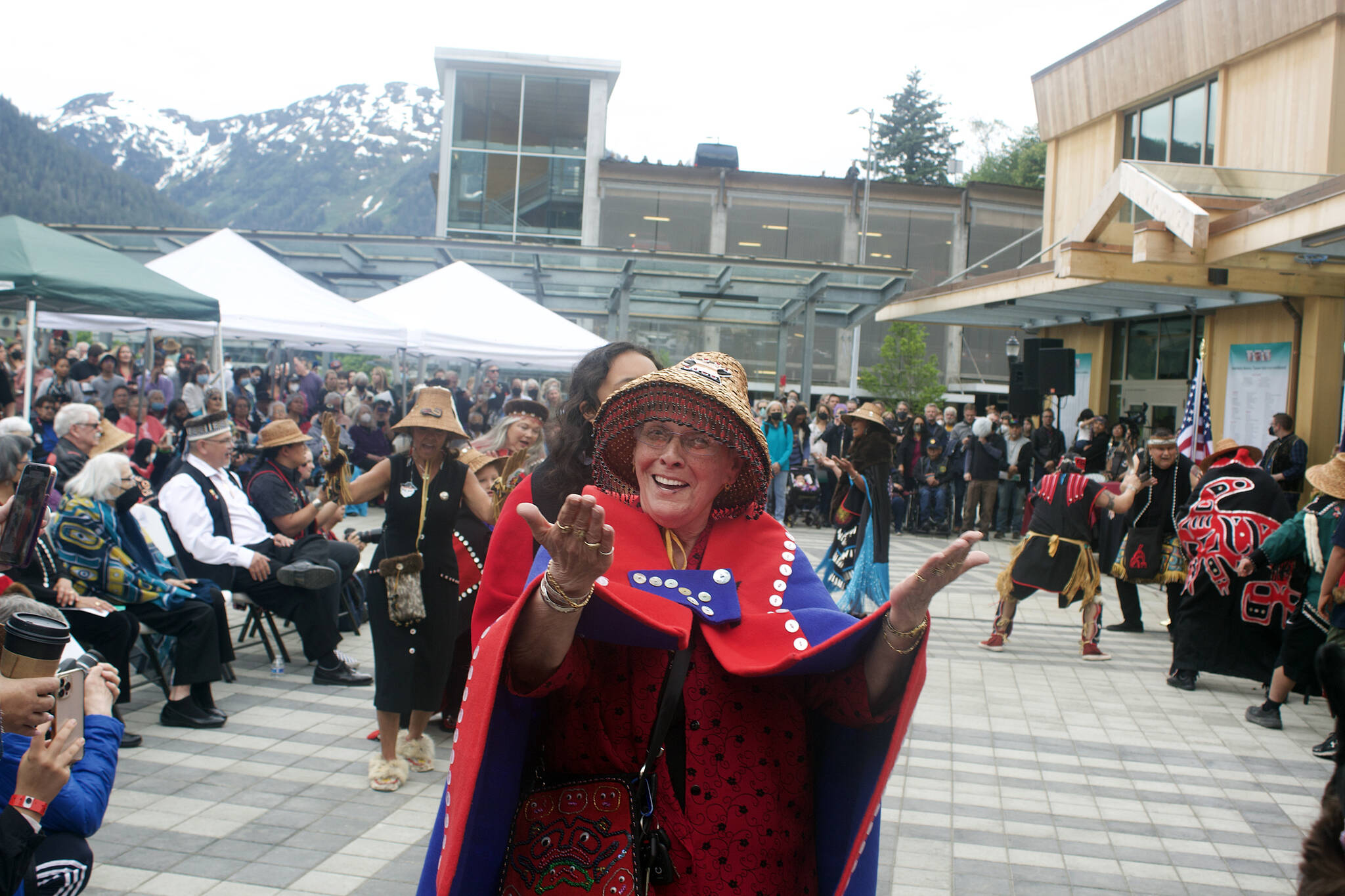From (st)art to finish
Celebration returned to Juneau at midday Wednesday with the official opening of the Sealaska Heritage Arts Campus, which tribal elders say signifies a regional Alaska Native culture whose past began thousands of years earlier than recently thought and whose future extends thousands of years longer than recently hoped.
Several hundred people gathered in the outdoor square between Sealaska’s corporate building and new cultural center, where Alaska’s first 360-degree totem pole also was honored with an official debut. Rosita Kaaháni Worl, president of Sealaska Heritage Institute and moderator of the ceremony, began with combining historic tradition and breaking news by referring to this year’s official Celebration theme “Celebrating 10,000 Years of Cultural Survival.”
“We survived and today we have hopes for an even greater and grander future,” she said.
Except, Worl added, the theme is no longer literally accurate since the roots of those ancestors go much further back in time. She said archaeologists conducting a regional underwater study announced last week artifacts shows the area’s tribal ancestry goes back at least 17,000 years.
“Watch for that press release,” she told the crowd to laughter and cheers.
The debut of the Sealaska Heritage campus was marked with dances by four of the regional tribal groups, traditional ceremonies including painting the corners of the building with handprints in red and black at opposite ends, and speeches by a large number of elders and other area dignitaries. Much of the dialogue focused on concerns about Alaska Native heritage being diminished in the past, and how determined communal efforts are reviving languages and customs many feared would be lost.
“Our culture is love, our culture is appreciation, our culture is respect and you saw all of that today,” Sealaska President and CEO Anthony Mallott said.
Mallott said Sealaska has spent the past 50 years striving to preserve and advance the regional Native history of what is now known to be the past 17,000 years, and he’s confident the same kinds of timelines are possible looking toward the future.
“When we talk about the next 50 years we’re confident we can take that vision and extend it the next 17,000 years,” he said.
The Sealaska Heritage campus is part of a larger effort by Alaska Natives and other collaborators to “make Juneau the Northwest Coast arts capital of the world,” Worl said. Events at the campus during Celebration, and beyond, will include classes, performances, art markets and other gatherings.
“Isn’t it wonderful to hear the voices of our ancestors,” she said. “I promise you their voices are going to get stronger with each generation.”
The 22-foot-high totem by Haida artist TJ Young (Sgwaayaans) and his brother Joe (Gidaawaan) is made from a 600-year-old red cedar tree from Prince of Wales Island, and represents the three Southeast Alaska tribes Tlingít, Haida and Tsimshian. The totem is four feet wide at the base and whose widest point is about 8 feet about halfway up where Eagle and Raven meet. It took about nine months to carve, more than twice as long as a traditional totem.
“We know our carvers use the long winters doing a lot of work, so we tried to throw a curveball at them and say you’re going to do one all the way around,” said Joe Kaaxúxgu Nelson, chair of Sealaska Corp.’s board of directors, who also placed the red handprint at one corner of the new culture center during the ceremony.
Nelson noted this year’s Celebration comes after a four-year interval during what’s been a biennial event since it debuted in 1982. The COVID-19 pandemic restricted the 2020 festival to a virtual event.
“The last time we gathered this was a parking lot,” he said.
Returning in person for the thousands expected to gather at Celebration this week is emerging from more than just the pandemic, said Richard Chalyee Éesh Peterson, president of the Central Council of Tlingit and Haida Indian Tribes of Alaska. It’s celebrating what many see as a landmark turning point for the cherished place of the region’s Native tribes for all people who experience the area in the future.
“This isn’t hiding,” Peterson said. “This is in front of everybody. This is going to be the crown jewel of our capital, the most beautiful capital in the country.”
• Contact reporter Mark Sabbatini at mark.sabbatini@juneauempire.com.

